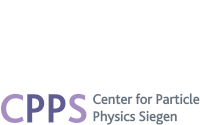Prof. Dr. Markus Cristinziani introduced the children from the 'Kinderuni' to research with accelerators and detection devices (Original article in German by Katja Knoche).
The children from 'Kinderuni' embarked on an experimental journey into the Geneva underworld together with physicist Prof. Dr. Markus Cristinziani. CERN, the European Organization for Nuclear Research, is the world's largest center for fundamental physics research. In the Large Hadron Collider (LHC), an approximately 27-kilometer-long underground circular accelerator, protons or lead ions are accelerated to near the speed of light to make them collide at extremely high energies. Magnets keep these particles on track during this process. New, tiny particles arise from these collisions, which leave traces in the connected detectors (detection devices). The physicists from Siegen were involved in the construction of the innermost pixel detector in the so-called ATLAS experiment as part of a collaboration.
The aim of this fundamental research is to gain further insight into key questions of physics that have remained unanswered by creating new, smallest particles. For instance, in 2012, the Higgs boson, an elementary particle that was predicted in the standard model of particle physics but had not been detected before, was verified. The World Wide Web – or the internet – also essentially originated as a byproduct at CERN.
The physicists from Siegen are also tracking cosmic radiation in an international collaboration in the Argentine Pampa. At the Pierre Auger Observatory, which was put into operation in 2008, particles that emerge when cosmic radiation, primarily made up of protons, hits the Earth's atmosphere, are studied. Matter consists of positively charged protons, electrically neutral neutrons, and negatively charged electrons.
Before the eyes of the children, Prof. Cristinziani and his team demonstrated the process of accelerators and collisions using the example of a quark accelerator. A ball set in motion hits a packet of quark and causes it to "explode" upon impact in a container. Using the example of a Galton board, the scientist impressively and comprehensibly demonstrated the Gaussian normal distribution. Small metal balls are dropped into a triangular lattice and fall down through the bars. A particularly large number of balls gather in the middle beneath the board because there are especially many paths leading to the center. If the center of the Galton board is equipped with obstacles, the distribution becomes flatter, with balls landing increasingly in the outer areas below the board. The experiment with the Galton board shows that information about the tiny particles in the collisions can be deduced from the distributions in the detection devices. For instance, this is how the structure of atomic nuclei was discovered.
What is the world made of? Ancient philosophers pondered this question. Empedocles believed that the Earth was made up of the four elements: air, fire, water, and earth. Democritus thought of indivisible tiny atoms. Today's scientists seek answers to this fundamental question based on experiments, the results of which are analyzed and described. The children from 'Kinderuni' got an impression of how this works. Naturally, there were many questions after the lecture.


